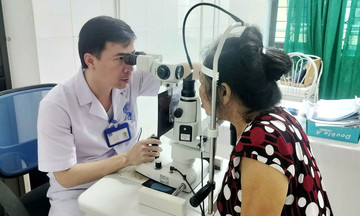Blood circulation is largely an automatic process. As blood circulates, oxygen-rich blood travels to the brain and other tissues while simultaneously removing waste products. It also carries oxygen-depleted blood back to the lungs from the brain and body for reoxygenation.
Many factors can affect blood circulation. According to the American Heart Association (AHA), a normal resting blood pressure in adults is less than 120 millimeters of mercury (mmHg) for systolic pressure and less than 80 mmHg for diastolic pressure, written as 120/80 mmHg. Those with low blood pressure may experience poor circulation and other related symptoms.
The heart is the muscle responsible for pumping blood throughout the body. The healthier the heart, the better the blood circulation. Healthy veins and arteries also contribute to easier blood flow. Excessively high cholesterol levels can damage and block blood vessels.
Poor circulation can be a symptom of other underlying conditions such as obesity, diabetes, peripheral artery disease (PAD), blood clots, and heart disease. The following measures can help alleviate poor blood circulation caused by these conditions.
Increase physical activity.
Being overweight can negatively affect blood circulation. Regular exercise, such as jogging, supports cardiovascular health, maintains a healthy weight, and promotes blood circulation. Studies indicate that cardio exercises are linked to increased cardiovascular performance and lower blood pressure. This type of exercise improves the body's ability to absorb and utilize oxygen. It also enhances the dilation of blood vessels, making them more efficient and allowing muscles to receive oxygen more readily.
 |
Jogging is good for cardiovascular health. Photo: Hoang Giang |
Practice yoga.
Yoga is a low-impact form of exercise that is easily adaptable for beginners. It involves bending, stretching, and twisting movements that promote flexibility and balance while potentially compressing and decompressing veins, improving cardiovascular health. A simple yoga pose for beginners is the downward-facing dog. This pose increases blood circulation by elevating the hips and heart, which helps direct blood flow towards the head.
Eat fatty fish.
According to the AHA, the omega-3 fatty acids in fish promote heart and brain health. Fish rich in omega-3s include salmon, mackerel, sardines, and tuna. Vegetarians can opt for kale, which provides a small amount of omega-3 fatty acids. Omega-3 fatty acid supplements are another option for those who do not eat fish.
Drink tea.
Both black and green tea are rich in antioxidants. Research suggests that black tea improves blood vessel health, while green tea is linked to a reduced risk of cardiovascular health problems.
Maintain balanced iron levels.
Iron is an essential mineral for the circulatory system. The body needs iron to produce hemoglobin, a major component of red blood cells responsible for carrying oxygen throughout the body. Eating iron-rich foods like red meat or spinach helps the body absorb enough of this vital mineral. However, maintaining a healthy balance is crucial, as too much iron can negatively impact cardiovascular health.
Wear compression socks.
Compression socks apply pressure to the calves and lower legs, forcing blood in these areas to flow upwards. They help create a continuous flow of blood throughout the circulatory system. Doctors may prescribe compression socks for conditions like varicose veins and lymphedema.
Quit smoking.
According to the American Cancer Society, blood circulation and lung function improve within 2 to 3 months of quitting smoking. Just 1 to 12 months after quitting, the small, hair-like structures in the lungs called cilia begin to regain function and clear mucus from the lungs. 1 to 2 years after quitting, the risk of heart attack decreases significantly.
If blood flow to a certain part of the body slows down, individuals may experience symptoms of poor circulation. These mainly occur in the hands or feet but can affect other body parts, including tingling, swelling, cognitive issues, skin changes, digestive problems, fatigue, cramps, erectile dysfunction, and dehydration.
People experiencing these symptoms should seek medical attention promptly to address any underlying medical conditions. Maintaining a nutritious diet, exercising regularly, and quitting smoking are also recommended.
Anh Ngoc (According to Medical News Today)












